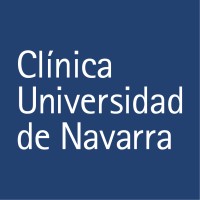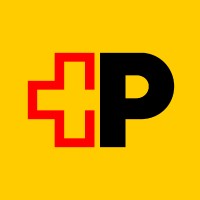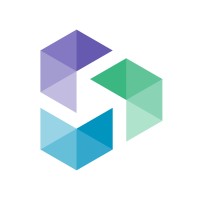Company Details
clinica-universidad-de-navarra
1,472
49,819
923
cun.es
24
CLÍ_1190722
Completed

Clínica Universidad de Navarra Company CyberSecurity Posture
cun.esLa Clínica de la Universidad de Navarra es un centro médico-hospitalario caracterizado por su alto grado de especialización médica, su constante renovación tecnológica, y su trabajo en equipo, que permite una valoración multidisciplinar y personalizada de cada paciente. Fue creada en 1961 y forma parte de la Universidad de Navarra. Por ello, la investigación, docencia y asistencia se realizan junto con las Facultades de Medicina, Ciencias y Farmacia, la Escuela de Enfermería y el Centro de Investigación Médica Aplicada (CIMA). La Clínica Universidad de Navarra es una institución privada sin ánimo de lucro guiada por los principios cristianos.
Company Details
clinica-universidad-de-navarra
1,472
49,819
923
cun.es
24
CLÍ_1190722
Completed
Between 750 and 799

 CUDN Global Score (TPRM)
CUDN Global Score (TPRM)XXXX



No incidents recorded for Clínica Universidad de Navarra in 2025.
No incidents recorded for Clínica Universidad de Navarra in 2025.
No incidents recorded for Clínica Universidad de Navarra in 2025.
CUDN cyber incidents detection timeline including parent company and subsidiaries

La Clínica de la Universidad de Navarra es un centro médico-hospitalario caracterizado por su alto grado de especialización médica, su constante renovación tecnológica, y su trabajo en equipo, que permite una valoración multidisciplinar y personalizada de cada paciente. Fue creada en 1961 y forma parte de la Universidad de Navarra. Por ello, la investigación, docencia y asistencia se realizan junto con las Facultades de Medicina, Ciencias y Farmacia, la Escuela de Enfermería y el Centro de Investigación Médica Aplicada (CIMA). La Clínica Universidad de Navarra es una institución privada sin ánimo de lucro guiada por los principios cristianos.


The Little Clinic provides high quality, affordable healthcare located in convenient retail settings. The Little Clinic diagnoses and treats minor illnesses for patients 12 months of age and up with care provided by board certified family nurse practitioners and/or physician assistants. The Little
Jumo Health develops age-appropriate, culturally sensitive, and relatable educational resources for patients and caregivers. We have experience serving diverse populations, covering more than 160 health topics across 75+ countries in 120+ languages - and we’re always expanding! Our multicultural of

The South Lyon Area Recreation Council was formed effective July 1, 1999 through a cooperative inter-local agreement between Green Oak Township, the Charter Township of Lyon, and the City of South Lyon. The Council effectively became an Authority under Public Act 321 on February 13, 2007. SLARA se

Swiss Post is your trusted and innovative partner when it comes to modern healthcare. The secure and reliable transport of information and goods has always been our core competency – we have also been doing this successfully in the healthcare sector for several years. With a combination of digital

Le SMIA (Service Médical Interentreprises de l’Anjou) est une association loi 1901 à but non lucratif, assurant la surveillance de l'état de santé des travailleurs des entreprises des arrondissements d’Angers et de Segré. Agréé par la DREETS des Pays de la Loire (Direction Régionale de l'Economie, d

Together for better healthcare: The overall goal of the HIT Community is to unite leaders in healthcare improvement (HCI) and provide a forum to exchange ideas, promote collaboration, and effect change. The Executive Insight HIT Community hosts both in-person summits and virtual forums to foster dia
.png)
Ahead of the International Day of Radiology (IDoR) on 8 November, the Spanish Society of Medical Radiology (SERAM) revealed the winners of...
Contrast-enhanced mammography (CEM) has become a second-line tool in the diagnostic and therapeutic process and is a reliable alternative to...
Combining diagnostic information taken from an amyloid PET scan and an FDG-PET scan can predict the short-term progression in patients from mild cognitive...
PET imaging biomarkers have become central to diagnosing cases of dementia and Parkinson's disease, but it's vital to keep in mind pitfalls...
Atletico Madrid signed 19-year-old striker Joao Felix from Benfica on Wednesday for 126 million euros (113 million pounds), making him the...
Siemens Healthineers and INSIGHTEC announce the CE clearance of Exablate Neuro, using ultrasound for treatments within the brain with no...

Explore insights on cybersecurity incidents, risk posture, and Rankiteo's assessments.
The official website of Clínica Universidad de Navarra is https://www.cun.es/.
According to Rankiteo, Clínica Universidad de Navarra’s AI-generated cybersecurity score is 770, reflecting their Fair security posture.
According to Rankiteo, Clínica Universidad de Navarra currently holds 0 security badges, indicating that no recognized compliance certifications are currently verified for the organization.
According to Rankiteo, Clínica Universidad de Navarra is not certified under SOC 2 Type 1.
According to Rankiteo, Clínica Universidad de Navarra does not hold a SOC 2 Type 2 certification.
According to Rankiteo, Clínica Universidad de Navarra is not listed as GDPR compliant.
According to Rankiteo, Clínica Universidad de Navarra does not currently maintain PCI DSS compliance.
According to Rankiteo, Clínica Universidad de Navarra is not compliant with HIPAA regulations.
According to Rankiteo,Clínica Universidad de Navarra is not certified under ISO 27001, indicating the absence of a formally recognized information security management framework.
Clínica Universidad de Navarra operates primarily in the Health and Human Services industry.
Clínica Universidad de Navarra employs approximately 1,472 people worldwide.
Clínica Universidad de Navarra presently has no subsidiaries across any sectors.
Clínica Universidad de Navarra’s official LinkedIn profile has approximately 49,819 followers.
Clínica Universidad de Navarra is classified under the NAICS code 923, which corresponds to Administration of Human Resource Programs.
No, Clínica Universidad de Navarra does not have a profile on Crunchbase.
Yes, Clínica Universidad de Navarra maintains an official LinkedIn profile, which is actively utilized for branding and talent engagement, which can be accessed here: https://www.linkedin.com/company/clinica-universidad-de-navarra.
As of November 27, 2025, Rankiteo reports that Clínica Universidad de Navarra has not experienced any cybersecurity incidents.
Clínica Universidad de Navarra has an estimated 403 peer or competitor companies worldwide.
Total Incidents: According to Rankiteo, Clínica Universidad de Navarra has faced 0 incidents in the past.
Incident Types: The types of cybersecurity incidents that have occurred include .
.png)
Angular is a development platform for building mobile and desktop web applications using TypeScript/JavaScript and other languages. Prior to versions 19.2.16, 20.3.14, and 21.0.1, there is a XSRF token leakage via protocol-relative URLs in angular HTTP clients. The vulnerability is a Credential Leak by App Logic that leads to the unauthorized disclosure of the Cross-Site Request Forgery (XSRF) token to an attacker-controlled domain. Angular's HttpClient has a built-in XSRF protection mechanism that works by checking if a request URL starts with a protocol (http:// or https://) to determine if it is cross-origin. If the URL starts with protocol-relative URL (//), it is incorrectly treated as a same-origin request, and the XSRF token is automatically added to the X-XSRF-TOKEN header. This issue has been patched in versions 19.2.16, 20.3.14, and 21.0.1. A workaround for this issue involves avoiding using protocol-relative URLs (URLs starting with //) in HttpClient requests. All backend communication URLs should be hardcoded as relative paths (starting with a single /) or fully qualified, trusted absolute URLs.
Forge (also called `node-forge`) is a native implementation of Transport Layer Security in JavaScript. An Uncontrolled Recursion vulnerability in node-forge versions 1.3.1 and below enables remote, unauthenticated attackers to craft deep ASN.1 structures that trigger unbounded recursive parsing. This leads to a Denial-of-Service (DoS) via stack exhaustion when parsing untrusted DER inputs. This issue has been patched in version 1.3.2.
Forge (also called `node-forge`) is a native implementation of Transport Layer Security in JavaScript. An Integer Overflow vulnerability in node-forge versions 1.3.1 and below enables remote, unauthenticated attackers to craft ASN.1 structures containing OIDs with oversized arcs. These arcs may be decoded as smaller, trusted OIDs due to 32-bit bitwise truncation, enabling the bypass of downstream OID-based security decisions. This issue has been patched in version 1.3.2.
Suricata is a network IDS, IPS and NSM engine developed by the OISF (Open Information Security Foundation) and the Suricata community. Prior to versions 7.0.13 and 8.0.2, working with large buffers in Lua scripts can lead to a stack overflow. Users of Lua rules and output scripts may be affected when working with large buffers. This includes a rule passing a large buffer to a Lua script. This issue has been patched in versions 7.0.13 and 8.0.2. A workaround for this issue involves disabling Lua rules and output scripts, or making sure limits, such as stream.depth.reassembly and HTTP response body limits (response-body-limit), are set to less than half the stack size.
Suricata is a network IDS, IPS and NSM engine developed by the OISF (Open Information Security Foundation) and the Suricata community. In versions from 8.0.0 to before 8.0.2, a NULL dereference can occur when the entropy keyword is used in conjunction with base64_data. This issue has been patched in version 8.0.2. A workaround involves disabling rules that use entropy in conjunction with base64_data.

Get company history
















Every week, Rankiteo analyzes billions of signals to give organizations a sharper, faster view of emerging risks. With deeper, more actionable intelligence at their fingertips, security teams can outpace threat actors, respond instantly to Zero-Day attacks, and dramatically shrink their risk exposure window.
Identify exposed access points, detect misconfigured SSL certificates, and uncover vulnerabilities across the network infrastructure.
Gain visibility into the software components used within an organization to detect vulnerabilities, manage risk, and ensure supply chain security.
Monitor and manage all IT assets and their configurations to ensure accurate, real-time visibility across the company's technology environment.
Leverage real-time insights on active threats, malware campaigns, and emerging vulnerabilities to proactively defend against evolving cyberattacks.




